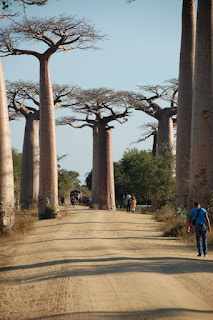The Friendly but Puzzling Baobab Tree
Okay, a tree can only be friendly when it is given human traits in stories. But if one could actually be friendly, it would be the baobab (its counterpart would be the poisonous manchineel tree). Nine species have been counted that have some basic similarities.
A grown baobab may have been in place for a thousand years, so it has an impressive circumference. Leaves? It only grows them during the very short wet season. Although the top branches look like roots, the actual roots run deep. The Creator built it to survive those harsh conditions.
 |
| Avenue of the Baobabs in Madagascar, Pexels / Beau Botschuijver |
These trees are in several diverse regions, which causes so much controversy among evolutionists that they want to slap leather right there in the saloon. Were the seeds carried to different places by humans? What about fossils and mutation rates? Interesting that the time frames of mutation rates put baobab trees in the biblical timeframe.
Baobab trees are wonderful, bizarre trees with a strange name. Baobabs, all in the genus Adansonia, are indigenous to Madagascar (six species), mainland Africa and the Arabian peninsula (two), and northwest Australia (one). . . .
Baobabs feature consistently in online lists of the world’s most incredible / inspiring / magnificent / amazing trees. They are among Earth’s longest-lived flowering plants, and under normal conditions can grow for over 1,000 years. One baobab was estimated to have lived for 2,600 years. . . .
Madagascar’s Adansonia grandidieri (fig. 1) is probably the iconic image of a baobab. Its tall, stout, strong trunk is topped with what looks like a broad cowboy hat. Viewing one close-up is an awe-inspiring experience. They are often called the upside-down tree, because they look like they were yanked from the ground and shoved back into it ‘head-first’, with roots in the air. Some have suggested they demonstrate that God has a sense of humour!
To read it all and be amazed, head on over to "The baobab: The strangest tree on Earth."